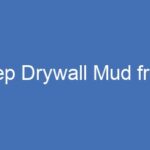This article will explore the step-by-step process of drywall manufacturing and provide insights into this critical supply chain fueling the construction industry.
Drywall, also known as wallboard or plasterboard, refers to large sheets typically consisting of a gypsum core layered between thick sheets of paper or fiber. As a building material used for interior walls and ceilings, drywall plays a pivotal role in construction for its many advantages of efficiency, cost, and performance. But behind the ubiquitous drywall panels found across homes and buildings lies a complex industrial manufacturing process.
Drywall consists of gypsum plaster pressed between two thick sheets of paper. The gypsum, a soft mineral made of calcium sulfate dihydrate, comprises the core that forms the structure of the board. The paper facings provide protection for handling and installation. Additional ingredients like glue, fiberglass, vermiculite, and clay are also integrated for enhanced properties. The result is an adaptable building material sold in sheets for fast and seamless installation on wall framing.
Significance of Drywall in Construction
Prized for its fire resistance, strength, sound dampening abilities, and convenience of installation, drywall has become an indispensable building block of construction over the past century. It surpassed earlier wall systems of wood or plaster lathes due to efficiencies in installation; drywall allows walls to be constructed much quicker through attachment to framing versus complex plastering.
The composition also resists moisture, requires less maintenance, and accommodates a variety of decorative finishes. With the rise of mass production post World War II, drywall has enabled leaps in construction productivity.
Overview of the Drywall Manufacturing Process
Modern drywall manufacturing operates as a high-volume, highly automated industry encompassing mining raw ingredients, refining and compounding gypsum slurry, forming it into large boards between layers of paper, drying in massive ovens, finishing the boards, and preparing them for distribution. Alongside machinery intensity, quality control and performance testing protocols ensure consistency in this vital building material. We explore the full sequence comprising this industrial-scale process.
I. Raw Material Preparation: Unveiling the Foundation
The manufacturing symphony commences with sourcing and processing essential raw components of the wallboard product.
Gypsum as the Primary Ingredient
Gypsum constitutes over 90% of drywall’s content by weight. In nature, gypsum exists as deposits of sedimentary rock. To ready it for incorporation into wallboard, the gypsum-bearing mineral undergoes preliminary quarrying, crushing, screening, grinding, and calcining – heating to remove water and yield calcium sulfate hemihydrate. The specific form known as stucco then becomes usable for feedstock in drywall operations.
Sourcing and Mining of Gypsum
Major gypsum deposits formed long ago across ancient inland seas serve as the basis for today’s supply. Mines and quarries actively operate across North America, Europe, Asia, South America, and Africa to tap into known sedimentary reserves. After extraction from deposits, gypsum-containing rock gets crushed, screened, and milled nearby before shipment to wallboard plants. Strict quality control governs selection and processing as purity directly impacts end product performance.
Quality Control in Gypsum Selection
Since gypsum composition varies across deposits, rigorous evaluation occurs before acceptance as drywall feedstock. Chemical analysis assures calcium sulfate content exceeds 90% with limited contaminants. Physical property testing includes assessing particle size, shade consistency, setting rate, and structural soundness when set – all crucial indicators for component suitability.
Additional Components
Beyond central gypsum, the wallboard composition integrates various supplemental materials essential for intended handling, consistency, and performance.
Paper Facing Materials
Paper constitutes the exterior protective coating sandwiching either side of gypsum cores. The facing not only enables easy handling of boards before installation but also reinforces structural integrity upon setting. Most commonly, a 100% recycled paper pulp mix gets layered in continuous feedstock alongside gypsum cake preparation then trimmed after drying.
Additives for Strength and Fire Resistance
Compounds like mica, vermiculite, perlite, clay binders, glass fiber, and strengthening emulsion get precisely metered into the core gypsum slurry before sheet forming commences. These augment fire resistance, control set rate and hardness, and bolster dimensional stability of the finished panels.
II. Sheet Forming: Crafting the Core Structure
With raw materials selectively sourced and supplemented, drywall sheet fabrication involves preparing gypsum slurry, continuously depositing it between paper facers, then regulating thickness and width to achieve properly formed boards ready for downstream drying and finishing steps.
Gypsum Slurry Preparation
The thick gypsum plaster mixture, also called cake or slurry, forms the origins of each sheet. Here stucco gets combined with water then mixed with various gauging additives using industrial high-speed blenders. This achieves an homogeneous cake perfectly poised for molding between paper sheets moving through the forming line.
Mixing and Homogenizing
Achieving uniform and consistent dispersion of gypsum, water, and functional additives necessitates intensive high-shear mixing. The viscous slurry gets powered by rotating vane impellers within the mixing apparatus introducing extreme turbulence to the batch. This efficiently integrates constituents into a bubble-free flowing compound ready for deposition onto conveyor belts.
Adjusting Composition for Different Drywall Types
Not all drywall gets manufactured equivalent; board products are tailored in composition for specific building applications. Standard boards differ from more specialized fire-resistant, acoustic, moisture-resistant, or high-strength varieties based on certain additive ratios and recipes adjusting gypsum, fibers, starches, and functional chemicals in the mixer slurries. These respond to various construction and code requirements.
Continuous Forming Process
The mixed slurries next undergo continuous depositing between two ever-moving paper sheets layered atop each other. The rigid steel conveyor belts sandwiching the cake never stop; rather, they progress down manufacturing lines rapidly to enable high-volume drywall fabrication 24/7.
Belt Conveyors and Automated Systems
The steel mesh belts drape the paper reels then carry cake progressing inside. Laser auto-leveling and ultrasonic scanning systems monitor strict uniform cake thickness and width for forming consistency. The nonstop belts can achieve over 500-ft./minute speeds for extreme productivity.
Shaping the Gypsum Slurry into Sheets
Fed by the mixing bowls upfront, pumps regulate the endless gypsum slurry streams between the two paper facers compressed by varying pressure rollers. This shapes cake to consistency targets set for board thickness. Regulating pumping flow rates and roller pressures allows real-time adaptability in sheet dimensions.
Facing Material Integration
Paper constitutes an integral component within drywall’s composite sandwich structure. Rolls of facing paper, made from recycled materials, unroll syncopated to gypsum deposition rates. The moving steel belts then compress paper tightly against slurry cake for solving and curing.
Layering the Gypsum Between Paper Sheets
In continuous overlaying of paper reels fed from spools, automated tension and tracking adjustments on the unfurling paper prevent irregularities as high-speed sheet forming occurs. This facilitates precision paper-to-gypsum layering in the manufacturing cascade.
Ensuring Adhesion and Consistency
A key aspect in board integrity includes optimizing gypsum-to-paper bonding. Conditioning the paper prior through moisturizing improves adhesion as curing commences. Even minute composition deviations can manifest in end performance issues, so stringent process regulating and testing verifies quality.
III. Drying: From Wet to Set
Fresh boards exiting the forming line contain considerable moisture. To finalize curing and adequately harden, they next advance through drying ovens regulating time, heat, and airflow to complete the gypsum set chemically bonding panels into rigid boards prepared then for downstream finishing.
Transportation to Drying Chambers
Upon discharge from the forming station, automated cutting transfers wet boards onto moving rack wagons advancing into the drying rooms. Sensor-signaled transfers minimize handling to protect sheet integrity. Non-stop rack entering and exiting preserves workflow continuity.
Controlled Drying Process
Within long high-capacity steel drying kilns, environmental conditions get meticulously controlled to drive moisture from fresh boards. Strategic airflow circulation, temperature profiling, and time inside optimize dehydration while preventing product damage during this delicate phase.
Hot Air Convection Techniques
Gas heating and fanned circulation provides the energy exchange to evaporate excess water locked inside wet boards entering on racks. However, excess heat risks permanent gypsum dehydration and board shrinkage cracking. Therefore, strategic tempering occurs through the length of kilns.
Monitoring Moisture Levels
In-line scanning instrumentation tracks individual board drying progress to adapt operational parameters accordingly. Gypsum chemically sets through evaporation, so quantifying water content indicates both progression rate and completeness for dispatch.
Finalizing Sheet Integrity
The drying step essentially finalizes board stability by fully solidifying gypsum plaster through moisture removal while retaining crystalline water in gypsum. This permanently sets drywall to engineered performance specifications.
Quality Checks During Drying
Continuous product testing even during drying verifies in-process quality benchmarks stay on target. Samples get pulled periodically and measured for moisture content, dimensions, and integrity to ensure proper equipment function and signal any process adjustments as needed.
IV. Cutting and Edging: Precision Panel Dimensions
Trimmed to standardized width and length dimensions with precision edge finishing, drywall boards complete their full material transformation upon exiting the drying ovens.
Trimming and Cutting Processes
After drying, boards get conveyed to trimming saws lopping them to length based on optimizing yield from the continuous forming output. Edging cutters then precisely bevel sides if specified. Sectioning the continual slab output into individual sheets prepares panels for bundling.
Automated Cutting Machines
Specialized roller feeders transfer boards to high-speed cross-cut saws for cutting panels to standardized length such as 8, 10, or 12 feet as needed. Precision-aligned blades with dust extraction sever boards cleanly and consistently to programmed dimensions.
Ensuring Standardized Panel Sizes
Precision length cutting classifies boards into usual building product sizes following initial bulk drying. This facilitates easy handling, shipping, and installation based on conventional construction frameworks and spacing practices.
Edging for Smooth Finishing
In addition to length-wise cutting, edging tools bevel sides with slight angles as specified. Square standard boards suit direct decorating while tapered edging assists blending joint compounds when installing panels.
Beveling and Squaring Techniques
Angled small grinding cutters shape board edges to enhance finishing outcomes. Four-side edging provides fully angled perimeter boards while two-side bevels boards intended simply for butted seam concealment. Squaring cutters produce 90-degree sides.
Inspection for Uniform Edges
Cameras inspect board edges and signal any detectable defects possibly requiring re-cutting a particular sheet to standards. This ensures edge consistency across all boards before downstream stacking and packaging occurs.
V. Quality Control: Ensuring Consistency and Performance
Prior to construction use, finished boards undergo extensive quality examination through visual scanning, physical testing, and measurement to validate integrity and durability. This proves fitness for use certifying product quality.
Rigorous Inspection Protocols
Multistage inspection rigorously examines material characteristics from manufacturing through finished boards. Trained personnel plus analytical instruments assess physical attributes and performance benchmarks unaffected by human subjectivity.
Visual Inspections
Operators examine each board surfacing from production seeking any manifest manufacturing defects that passed through upstream quality checkpoints. Board integrity requires surface flawlessness and square panel forming.
Utilization of Automated Inspection Systems
In addition to manual scrutiny, sensor arrays relentlessly scan boards to detect subtle property variations impossible to see but signaling potential performance issues in application. These identify thickness and density deviations plus internal bond deficiencies.
Testing for Strength and Performance
Finished boards randomly pulled from packaging undergo certified structural and ambient testing. Samples face compression, flexural assessments and simulated environmental exposures to validate claims around structural capacities.
Compression and Flexural Strength Tests
Certified testing fixtures measure board load capacities, both perpendicular and lateral resistance. Minimum strength thresholds qualify fitness for vertical building application safely sustaining required loads.
Fire Resistance and Sound Transmission Ratings
Specialized chambers additionally evaluate fire resistance and acoustic isolation using standard time-temperature curves and noise reduction metrics. These addon certify board categorization like fire-rated Type X and noise-dampening boards.
VI. Packaging and Distribution: Ready for Construction Sites
Now fully formed, dried, cut, and tested, finished drywall gets protected by sturdy wrappings and transported from factories through distribution centers then onto retailers and finally delivery straight to jobsites.
Packaging Considerations
While structurally robust as a panel, drywall still risks damage without protection during shipping and handling. Paper facings and squared edges especially remain vulnerable to breakage and scuffing so boards get bundled onto pallets then shrink-wrapped in plastic sheeting.
Protecting Sheets During Transportation
High-strength plastic stretch wrap tightly encases board stacks onto pallets protecting from environmental elements like rain while stabilizing loads for jostling during transit without tearing of paper faces or cracking sheet corners.
Bulk Packaging for Efficiency
Stacking drywall onto standard 48×40 inch pallet footprints maximizes transport efficiencies. Typical truck trailer volumes range 20-30 pallets broadside stacked two levels tall allowing major cubic capacity usage.
Distribution Logistics
Regional distribution centers form an intermediary between centralized manufacturing plants and downstream channels to construction trade and do-it-yourself retail outlets. Inventory gets positioned proximate to construction demand met through “just-in-time” supply chain methodologies.
Supply Chain Integration
Linking raw material suppliers, manufacturing, warehousing/distribution, and customer delivery comprises an integrated drywall supply chain predicated on reliable consistency, responsiveness and delivery performance to construction sector customers.
Meeting Timelines for Construction Projects
Production planning weighs historical demand patterns, economic projections, and confirmed contractor orders to assure adequate drywall availability when needed. This synchronizes operations for “on time, in full” order fulfillment vital for construction progress timelines.
VII. Environmental Considerations: Sustainable Practices in Drywall Manufacturing
Seeking to minimize ecological impact, companies increasingly implement sustainable initiatives around drywall production focused on energy, waste, and resource conservation advancing environmental responsibility.
Recycling and Reuse of Production Waste
Factories actively recycle paper waste, trim scrap, and excess finished product back into manufacturing. This saves virgin material inputs and landfilling while lowering embodied product emissions. Powder coatings reclaim and add recycled gypsum content.
Energy-Efficient Drying and Manufacturing Technologies
Switching drying kilns from fossil fuels to electric power coupled with waste heat recycling measurably improves carbon footprinting. Production machines upgrade to premium efficiency electric motors and lights lowering overall operational electricity.
Implementation of Eco-Friendly Additives
Manufacturing committees sanction alternate additives like recycled glass beads substituting incumbent mineral derivatives for enhanced sustainability. These maintain performance while reducing environmental mining and chemical processing impacts.
VIII. Technological Advancements: Innovations in Drywall Manufacturing
Ongoing technology integration concentrates around raising automation levels, material and performance advances, predictive analytics, and connected supply chain enhancements throughout the industry.
Automated Manufacturing Processes
Production systems integrate more sensors, instrumentation, analytic software and autonomous machine adjustments for “lights-out” operations minimizing labor for increased cost control and output. Expanding IoT networks grant management by exception.
Integration of Artificial Intelligence for Quality Control
Interconnected sensor grids surveilling equipment amass abundant data executed through machine learning algorithms spotting minute process deviations otherwise not visible. This promises far less variability in final boards.
Sustainable Material Alternatives and Development
Advancing sustainable materials like gypsum composite replacing conventional papers or integrating more recycled content makes gains through chemistry innovations. These maintain quality and cost while achieving environmental objectives.
Wrapping Up
Recap of the Drywall Manufacturing Process
This end-to-end review of drywall fabrication elucidates the meticulous industrial processes realizing construction boards beginning from raw gypsum quarries through precisely mixed slurries between continuous paper feeds compressed then cut, dried, and finished into quality-certified panels bound for buildings across the world. We witness an intricate amalgam of machines, sensors, computations and material science synchronizing raw earthly minerals into essential building blocks through an orchestrated manufacturing dance.
The Role of Technology in Advancing the Industry
While vast mechanization already drives existing drywall operations, emerging robotic, analytic, and material science technologies portend next-level gains in consistency, precision, pace, and sustainability over current manufacturing platforms. The integration of more autonomous optimization, interconnected supply visibility, simulative modeling capabilities and engineered materials presage a new era in evolved drywall processing.
Anticipated Future Trends in Drywall Manufacturing
Looking forward, smart manufacturing ecosystems will continue digitizing older analog factory infrastructure. We should expect comprehensive instrumentation overlaying all equipment for predictive diagnostics avoiding downtime. Expanding use of recycled and advanced composite inputs can better conserve natural resources as product chemistries advance. Drywall manufacturing marches steadily to higher automation, zero-waste recycling, renewable energy self-supply, and interconnected supply chains for more resilience serving construction’s demands. The symphony will only grow more complex yet harmonious through conductors of technological innovation.
tag: # drywall manufacturing







